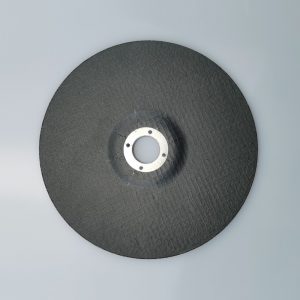What is the best kind of grinding wheel for steel?
What is the best kind of grinding wheel for steel?
Grinding steel is a common machining process used in various industries, including manufacturing, construction, automotive, and aerospace. Whether shaping, sharpening, or finishing steel components, selecting the appropriate grinding wheel is crucial to achieving optimal results while ensuring efficiency, quality, and safety. With a plethora of grinding wheel options available, each designed for specific applications and materials, understanding the characteristics and properties of grinding wheels for steel is essential.

Understanding Steel:
Steel is a versatile and widely used alloy composed primarily of iron and carbon, with other elements such as manganese, chromium, and nickel added to impart specific properties. Depending on its composition and processing, steel can exhibit varying hardness, strength, and machinability, making it suitable for a wide range of applications. From structural components to precision machinery parts, steel is a fundamental material in modern manufacturing and engineering.
Types of Grinding Wheels for Steel:
1. Aluminum Oxide Grinding Wheels:
– Aluminum oxide wheels are among the most commonly used grinding wheels for steel. These wheels feature abrasive grains made of aluminum oxide, a tough and durable material known for its versatility and performance in general-purpose grinding applications. Aluminum oxide wheels offer excellent cutting efficiency, long tool life, and consistent performance when grinding various grades of steel, including carbon steel, alloy steel, and tool steel.
2. Silicon Carbide Grinding Wheels:
– Silicon carbide wheels are another popular choice for grinding steel, especially for applications requiring high removal rates and precision. These wheels feature abrasive grains made of silicon carbide, a hard and sharp material renowned for its abrasion resistance and thermal conductivity. Silicon carbide wheels offer superior performance when grinding hardened steels, stainless steel, and heat-treated alloys, providing fast material removal and excellent surface finishes.
3. Zirconia Alumina Grinding Wheels:
– Zirconia alumina wheels are advanced abrasive wheels engineered for heavy-duty grinding applications on steel and other ferrous metals. These wheels feature abrasive grains made of zirconia alumina, a synthetic material combining zirconium oxide and aluminum oxide. Zirconia alumina wheels offer exceptional toughness, heat resistance, and cutting efficiency, making them ideal for grinding hardened steels, high-alloy steels, and stainless steel.
4. Ceramic Alumina Grinding Wheels:
– Ceramic alumina wheels are premium abrasive wheels designed for high-performance grinding of steel and other challenging materials. These wheels feature abrasive grains made of ceramic alumina, a superior material known for its exceptional hardness, toughness, and heat resistance. Ceramic alumina wheels offer extended tool life, reduced heat generation, and superior surface finishes when grinding hardened steels, aerospace alloys, and exotic metals, making them ideal for precision grinding applications.
Properties and Characteristics of Grinding Wheels for Steel:
1. Hardness:
– The hardness of the grinding wheel determines its ability to withstand cutting forces and maintain its shape during grinding operations. For grinding steel, wheels with moderate to high hardness are preferred to ensure efficient material removal and long tool life.
2. Toughness:
– Toughness refers to the ability of the grinding wheel to resist fracture and withstand impact and shock loads during grinding. Grinding wheels for steel require high toughness to withstand the high forces and pressures encountered during heavy-duty grinding operations.
3. Heat Resistance:
– Heat resistance is critical when grinding steel to prevent thermal damage to the workpiece and grinding wheel. Grinding wheels with excellent heat resistance help dissipate heat effectively, reducing the risk of overheating, workpiece distortion, and premature tool wear.
4. Cutting Efficiency:
– The cutting efficiency of the grinding wheel determines its material removal rate and surface finish. Grinding wheels with sharp and well-defined abrasive grains offer superior cutting efficiency, enabling rapid stock removal and precise surface finishes when grinding steel.
Applications of Grinding Wheels for Steel:
1. Stock Removal:
– Grinding wheels for steel are used for rapid stock removal, shaping, and profiling of steel components, including bars, plates, and forgings. They are employed in manufacturing processes such as machining, forging, and casting to remove excess material and achieve desired dimensions and surface finishes.
2. Surface Grinding:
– Grinding wheels for steel are utilized in surface grinding operations to achieve flatness, parallelism, and surface finish requirements on steel surfaces. They are commonly used in precision machining, tool and die making, and automotive manufacturing to produce high-quality surfaces with tight tolerances and smooth finishes.
3. Sharpening:
– Grinding wheels for steel are essential for sharpening cutting tools, blades, and knives used in various industries, including woodworking, metalworking, and fabrication. They are employed in tool and cutter grinders, bench grinders, and sharpening machines to restore sharpness and cutting performance to worn or dull cutting edges.
4. Finishing:
– Grinding wheels for steel are employed in finishing operations to refine surface textures, remove surface defects, and improve surface aesthetics on steel components. They are used in applications such as polishing, deburring, and edge blending to achieve smooth, uniform, and visually appealing surface finishes.
Best Practices for Selecting Grinding Wheels for Steel:
1. Consider Material Compatibility:
– Select grinding wheels that are compatible with the type of steel being machined, considering factors such as hardness, alloy composition, and surface finish requirements.
2. Assess Grinding Requirements:
– Evaluate the specific grinding requirements, including material removal rates, surface finish expectations, and dimensional accuracy, to determine the appropriate type and specification of grinding wheel for the application.
3. Choose Wheel Characteristics:
– Consider wheel properties such as hardness, toughness, heat resistance, and cutting efficiency to ensure optimal performance and longevity in steel grinding applications.
4. Match Wheel Size to Application:
– Select grinding wheel sizes and shapes that are suitable for the application, taking into account factors such as workpiece geometry, accessibility, and grinding machine capabilities.
5. Follow Manufacturer Recommendations:
– Adhere to the manufacturer’s recommendations and guidelines for selecting and using grinding wheels for steel to ensure safe and effective operation and avoid potential hazards and issues.
Choosing the right grinding wheel for steel is essential for achieving optimal results in machining, fabrication, and manufacturing processes. Whether shaping, sharpening, or finishing steel components, selecting the appropriate grinding wheel based on material compatibility, grinding requirements, and wheel characteristics is critical.
News
Contact Us
Contact: Kamel Abrasives
Phone: 86-15639772803 - Eva Lee / 86-18530871671 - Gareth Bayley / 86-13663827325 - Ryan Qiao
Tel: 86-371-88828885
E-mail: sales@kamel.com.cn
Add: High Technology Area, Zhengzhou, Henan, China
